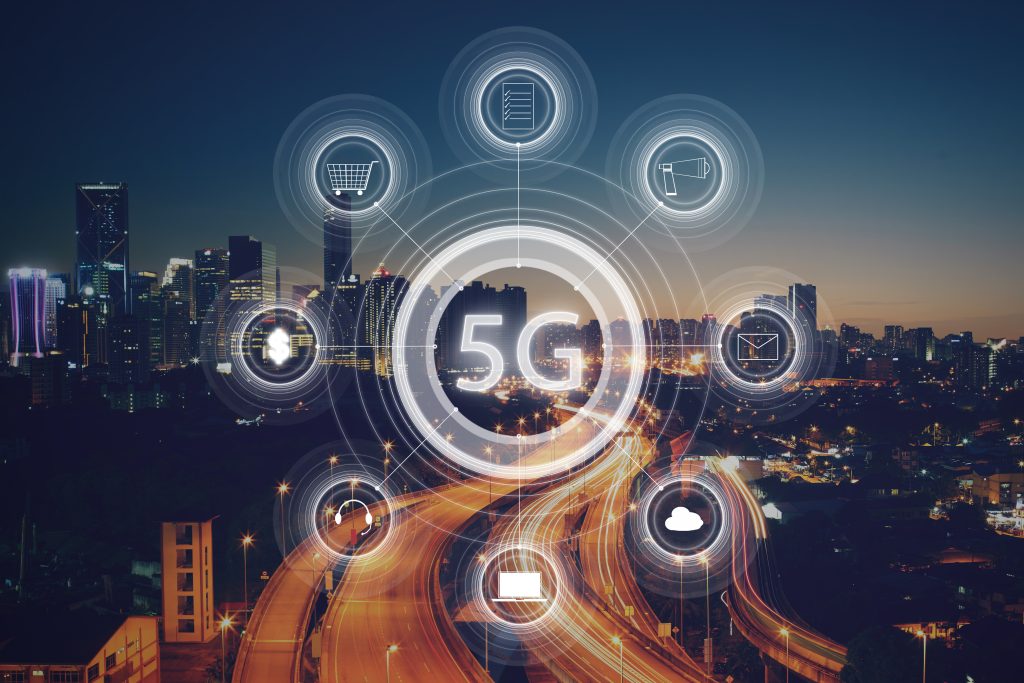You may be skeptical about the much-touted potential of 5G in IoT, but it’s important to recognize that this integration is not without its challenges. The convergence of 5G and IoT poses a unique set of obstacles that need to be tackled in order to fully embrace this transformative technology. From bandwidth and capacity issues to privacy and security concerns, there are significant hurdles that must be addressed. By exploring these challenges and understanding the importance of strategic planning and collaboration, we can pave the way for a future of enhanced connectivity and innovation. So, let’s dive into the complexities of 5G in IoT and discover how we can overcome these obstacles to unlock its full potential.
Bandwidth and Capacity Challenges
Bandwidth and capacity challenges in the realm of 5G and IoT integration necessitate the need for faster networks and higher capacities to accommodate the exponential growth of connected devices. As the number of connected devices is expected to reach 29.3 billion by 2023, the requirements of 5G networks and IoT scalability become paramount. To meet the demands of this interconnected landscape, 5G networks must have the ability to handle massive data traffic and provide ultra-low latency. This requires network operators to upgrade their infrastructure to support the increased bandwidth and capacity.
Cloud connectivity for IoT is also crucial in addressing these challenges. By connecting IoT devices through the cloud, manufacturers attempt to solve security issues and enhance scalability. However, this approach raises concerns about the security of sensitive data transmitted over the cloud. Failure to address these challenges as 5G rolls out could have a significant impact on internet users and businesses. The exponential increase in bandwidth requirements and capacity might strain internet exchange points, leading to slower networks and decreased reliability.
Moreover, IoT security challenges arise due to the sheer volume of connected devices and the potential vulnerabilities they introduce. Unique authentication methods and strict access management on gateways are essential to ensure IoT security. Protective measures, such as encryption and advanced threat detection, must be implemented to safeguard network integrity.
Digital Infrastructure and Interdependence
To address the challenges of digital infrastructure and interdependence in the realm of 5G and IoT integration, network operators must carefully assess the needs and potential issues of IoT projects and deliver appropriate support and service concerns to IoT teams. Here are three key points to consider:
- Interconnected Networks: The integration of 5G and IoT requires a robust and interconnected network infrastructure to support the increased number of connected devices. Network operators must ensure that their networks can handle the bandwidth and capacity requirements of IoT devices, while also maintaining network stability and reliability.
- Infrastructure Risks: Poorly implemented IoT solutions can pose risks to the overall infrastructure. If a single sensor or device becomes vulnerable to cyberattacks, it could potentially disrupt entire production lines and create service gaps. Network operators must prioritize security measures and implement strategies to mitigate these risks.
- IoT Project Assessment: Network operators and infrastructure leaders must conduct thorough assessments of IoT projects to identify potential issues and gaps in service. By understanding the specific needs and requirements of IoT deployments, network operators can provide the necessary support and resources to ensure the success and stability of these projects.
5G Big Data Management
Managing big data in the context of 5G and IoT integration involves handling and processing large volumes of data generated by IoT devices in a timely and efficient manner. With the exponential growth of connected devices and the transition to 5G networks, the demand for data exchange is increasing. This poses challenges for long-term IoT devices and reveals infrastructural weak points that may struggle to handle the growing bandwidth and security demands.
One of the key challenges is maintaining network stability. As IoT devices become more prevalent, any issues with the network infrastructure can have a significant impact on the consumer segment. This highlights the importance of addressing emerging IoT risks and ensuring the stability of the network infrastructure.
Moreover, the accumulation of data over time from IoT devices requires effective data management strategies. The ability to efficiently process and analyze this data is crucial for extracting valuable insights and driving meaningful outcomes.
Privacy and Security
Securing data becomes increasingly vulnerable with the extension of 5G technology and the proliferation of IoT devices. As the IoT landscape expands, it brings forth a number of challenges in terms of privacy and security. To address these challenges, it is crucial to implement effective data protection measures, authentication methods, access management protocols, and privacy measures. Here are three key considerations for ensuring privacy and security in the age of 5G and IoT:
- Data protection: With the increased connectivity and data transmission capabilities of 5G, it is essential to prioritize data protection. This includes implementing encryption techniques, ensuring secure transmission of data, and regularly updating software to protect sensitive information.
- Authentication methods: Good IoT security practices require unique authentication methods to verify the identity of devices and users. Implementing strong authentication protocols ensures that only authorized individuals and devices can access the network, reducing the risk of unauthorized access and data breaches.
- Network integrity: Maintaining the integrity of the network is crucial for safeguarding against potential security threats. This includes implementing advanced threat detection and mitigation strategies, monitoring network traffic for anomalies, and regularly updating security protocols to address emerging risks.
Strategic Addressing of Emerging IoT Capabilities
As you address the challenges of privacy and security in the age of 5G and IoT, it is essential to strategically consider the emerging capabilities of IoT to ensure a robust and resilient network infrastructure. To effectively address these capabilities, focus on IoT gateway management, network auditing, and network management solutions.
Implementing effective IoT gateway management is crucial for ensuring the security of your IoT devices. This involves implementing firewalls and other protective measures to prevent unauthorized access and potential cyberattacks. It is also important to regularly update and patch your IoT devices to address any security vulnerabilities.
Network auditing is another critical aspect of addressing emerging IoT capabilities. By regularly auditing your network, you can identify any unknown or rogue devices that may pose security risks. This allows you to take appropriate actions to mitigate these risks and maintain a secure network environment.
Additionally, network management solutions play a vital role in ensuring the security and stability of your IoT network. These solutions, commonly found in well-managed enterprise networks, should also be made accessible to small and medium-sized businesses and average consumers. They provide the necessary tools and resources to monitor and manage IoT devices effectively.
Benefits and Opportunities of 5G and IoT Integration
The integration of 5G and IoT offers numerous benefits and opportunities for businesses and consumers alike. Here are three key advantages of this integration:
- Faster Communication: With the implementation of 5G technology, IoT devices can communicate at ultra-low latency and high speeds. This enables real-time data transfer and quick response times, improving overall efficiency and productivity.
- Innovation Facilitation: The combination of 5G and IoT opens up new possibilities for innovation across industries. It allows for the development of advanced applications and services, such as autonomous vehicles, smart cities, and telemedicine. This integration paves the way for transformative advancements and drives the growth of Industry 4.0.
- Diverse Applications Support: 5G and IoT integration supports a wide range of applications across various sectors. From agriculture to manufacturing to healthcare, IoT devices can benefit from the higher bandwidth, ultra-low latency, and improved reliability provided by 5G networks. This opens up opportunities for resource management enhancement, sustainable practices, and optimized processes.
Challenges of IoT Security in the Age of 5G
With the integration of 5G and IoT comes a new set of challenges, particularly when it comes to ensuring the security of IoT devices in the age of 5G. The increased connectivity and data transmission capabilities of 5G may expose vulnerabilities in IoT devices, making them more susceptible to attacks. To address this, prioritization of security measures such as encryption and authentication is crucial. Regular software updates are necessary to protect sensitive data from emerging threats. Network providers should implement advanced threat detection and mitigation strategies to detect and respond to potential attacks. Additionally, collaboration between stakeholders is essential for comprehensive IoT security. By sharing knowledge and expertise, stakeholders can work together to identify and address security risks. This collaborative approach can help in the development of robust security protocols and practices to safeguard IoT devices and the data they generate. Overall, the challenges of IoT security in the age of 5G require a proactive and collaborative approach to ensure the safety and privacy of data transmitted through IoT devices.



